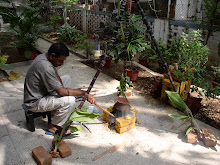DAMAGE TOCELLULOSE FABRICS
PROBLEM?
Mysterious holes in cellulose
fabrics, such as cotton, linen, rayon, ect and blends of these fibers.
IT LOOKS LIKE?
The damage may appear as a circular hole, tear,
or weak, thin area with no particular shape.
Sometimes the damage may be accompanied by a yellow or rust-colored stain.
CAUSE?
There are usually two distinct types of damage:
oxycellulose or hydrocellulose.
Oxycellulose forms
when oxidizing agents such as strong alkaline
bleaches (i.e. chlorine) have contacted the fabric.
Hydrocellulose damage is due to contact with an
acidic substance. This type of damage may result from prolonged contact with mild acids, such as
fruit juices, soft drinks, or foods such as tomatoes or lemons. Strong mineral acids, such as sulfuric or
hydrochloric acid, may cause similar damage. The damage to the cellulose fabric may occur
only after prolonged contact with any of the above agents. However, the agitation of any later
care process will aggravate areas that have already been degraded by the chemicals, making
the damage become more evident.
How to PREVENT?
When any of the above substances have come into contact with fabrics, it is recommended that
the area be promptly rinsed with cold water in order to flush the staining substance from the fabric.
Unless this rinsing procedure is done promptly, later disintegration of the fabric may result.
Is the seller liable under 16 CFR 423
If the care label states use any bleach , Then Yes
If the Care label stated do not bleach then No.

No comments:
Post a Comment